Let’s Connect: Digital Thread Advances Manufacturing
Smart factories thrive on data and drive quality improvements for aerospace
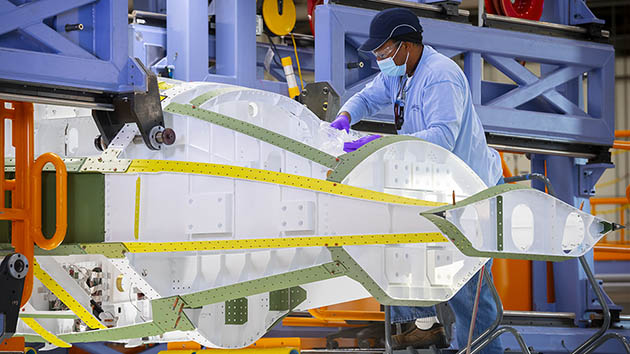
By Queena Jones, Boeing writer
A much-needed tool is located quickly in a 1.2 million-square-foot factory, as smart tags help manufacturing and fulfillment teams search available or misplaced inventory.
A mechanic uses a wireless device to collect wing measurements without having to climb onto the airplane.
Thanks to a sensor on a worker’s vest, an alert sounds to remind an airplane painter to secure their safety harness.
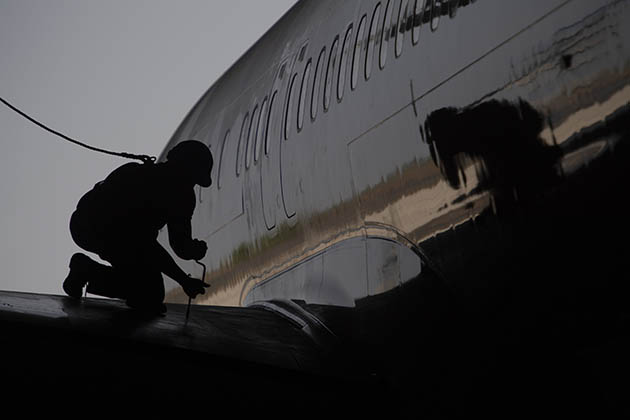 737 maintenance
737 maintenance
Production systems and people connect seamlessly with technology to foster a safe work environment and achieve high-quality work, from concept to production to service, in Boeing’s smart factories.
“Boeing is embracing multiple advanced manufacturing techniques to strengthen our production systems and deliver on our commitments to product quality and safety,” said Scott Stocker, vice president of Manufacturing and Safety for Boeing Commercial Airplanes.
To make it possible, digitally-enabled devices constantly collect, produce and swap data. Those same devices send the data through various systems and protocols, informing and controlling manufacturing processes.
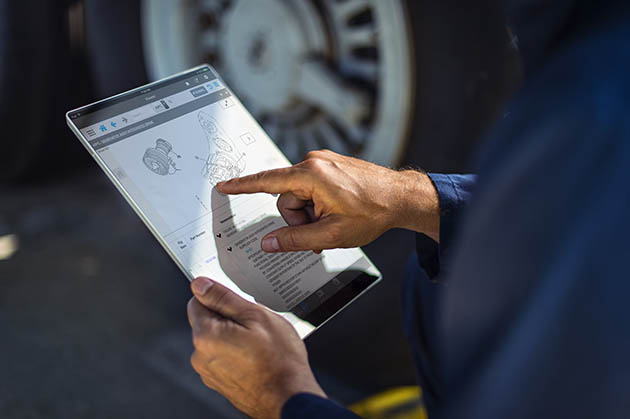 BGS Everett Flightline
BGS Everett Flightline
Just like smart homes, smart factories offer controlled environments, automate equipment maintenance and notify operators when attention is needed — similar to adjusting your home’s thermostat while you’re away on vacation or getting an alert that it’s time to change a water filter.
In the same way, machine sensors send performance data to a dashboard. The operator can then monitor equipment in real-time and keep things running smoothly. Indicators may show a low fluid level or notify a technician that a machine requires recalibration. Environmental sensors constantly survey for variations in temperature, humidity, vibration and noise.
At the Boeing Sheffield facility in South Yorkshire, England, a tooling application measures consumption and orders just-in-time replacements, ensuring technicians always have tools on hand for their work, without spares consuming storage space. The site is the first to use an operations management system that, through an intuitive user interface, reduces touch time and complexity for operators and provides live machine performance data to industrial engineering.
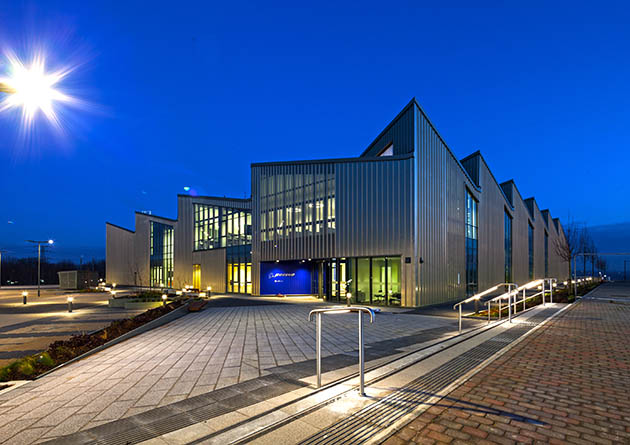
“Maintaining constant awareness of the manufacturing environment enables our teams to work safely and efficiently and helps us mitigate downtimes and stabilize the production process,” said Stocker.
One key to a connected factory is known as the industrial Internet of Things, or simply IIoT. The IIoT connects physical things — such as production tools and manufacturing equipment — with various control systems. These systems process and calculate large amounts of data and feed the information back into the production system, providing actionable intelligence in near real time.
“Through IIoT connectivity, we get information we can use,” explained Jonathan Vance, a Boeing Associate Technical Fellow who has worked to integrate embedded and wireless electronic systems at Boeing since 2008.
Engineering, IT and data analytics teams rely on the IIoT platform for the connectivity that enables them to collect real-time data and gain insight into manufacturing processes. Connecting hundreds of pieces of automated manufacturing equipment, IIoT helps inform smarter decisions about equipment use and streamline maintenance activities.
Regarding his experiences integrating wireless systems at dozens of Boeing facilities, Vance said, “Completing the digital thread in a factory setting is easy to say, but hard to do.”
Off-the-shelf technologies like Bluetooth connectivity and radio-frequency identification (RFID) can be especially helpful in Boeing’s large manufacturing centers, where some teammates work at heights or in confined spaces.
For example, Vance developed an application that connects an RFID tag on an airplane livery painter’s safety harness to a digital dashboard on the production floor. If the harness is not secure or becomes disconnected, the embedded tag alerts the individual and teammates to refasten the harness.
More commonly, RFID technologies are used in more than 25 Boeing facilities to monitor inventory or to tag any number of production items, Vance said, including assembly jigs, parts or tool boxes.
“You can pull up a particular building, get a bird’s-eye view of the factory and see exactly where the tagged assets are located,” he said. At Boeing South Carolina, teammates are piloting new uses of RFID tags to track the locations of hand tools across the expansive site where the 787 Dreamliner is built.
In other production areas, Boeing is beginning to use digitally-enabled tools to drive efficiency, predictability and stability into multiple manufacturing processes.
In St. Charles, Missouri, mechanics use Bluetooth-enabled, digital torque wrenches to install fasteners on Joint Direct Attack Munition guidance kits. Such digital tools hold a tighter tolerance and require fewer recalibrations, so the person doing the work can be sure the right amount of torque is being applied to each fastener, Vance explained.
The tool automatically records each measurement and sends that data to the production system. “All that happens in the background in real time, so it helps the operator know they completed the job right,” said Vance. “This added capability enables us to use the digital thread to systematically verify the work and also affects closed-loop control in our manufacturing processes.”
These loops of data are essential to production quality across Boeing’s advanced manufacturing centers, as data threads connect engineering and manufacturing teams and ensure everyone has the information they need in real time. IT and manufacturing teams are developing a plug-and-play sensor registry, which will scale additional sensors to support the digital threads and digital twins of both Boeing products and production factories.
As Boeing begins to produce composite components for combat aircraft at its new Advanced Composite Fabrication Center (ACFC) in Mesa, Arizona, manufacturing teams there demonstrate how a product’s digital thread affects the entire production system.
“The ACFC capitalizes on the latest in digital engineering — from initial concept and design to the production floor and sustainment — and its capabilities are aligned directly with our customers’ need to design, build and field advanced combat aircraft on dramatically accelerated timelines,” said Steve Nordlund, vice president and general manager for Boeing Phantom Works.
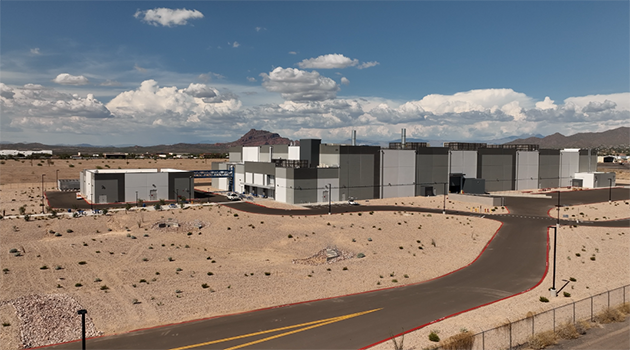
Already, Boeing Defense, Space & Security has proved the advantages of digital engineering on three aircraft: the T-7A Red Hawk, the MQ-25 Stingray and the MQ-28 Ghost Bat.
The T-7A, an advanced trainer for the U.S. Air Force, uses model-based engineering and 3D design tools to realize an 80% reduction in assembly hours.
Similarly, a digital thread flows from design to production to support the Boeing technicians and mechanics in St. Louis as they assemble the MQ-25, the U.S. Navy’s unmanned aerial refueler. Production teams access 3D-model-based instructions on tablets and monitors to confirm their work meets engineering specifications exactly. The aircraft is digitally-native — meaning it’s a clean-sheet design developed entirely with digital engineering.
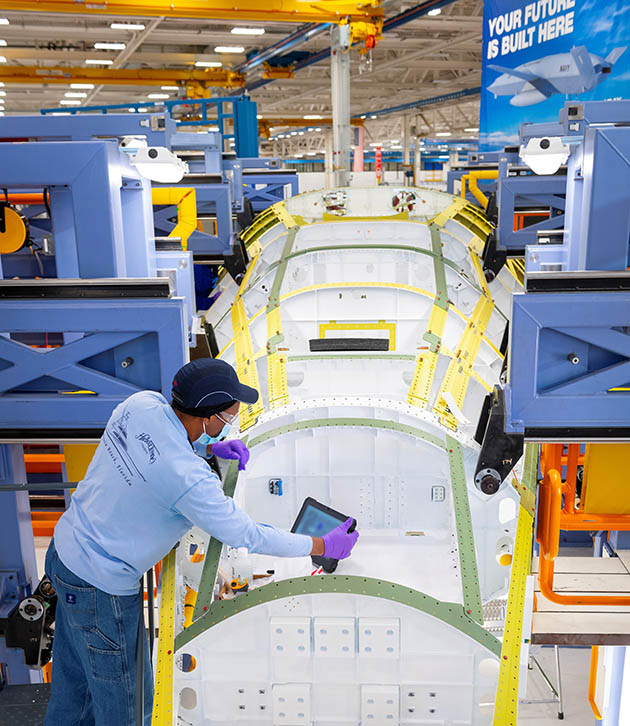
The MQ-28 is an uncrewed military combat aircraft developed by Boeing Australia alongside the Royal Australian Air Force. With a rapid development timetable of just three years from ideation to first flight, the program leverages advancements in digital engineering and advanced manufacturing.
When it comes to existing aircraft systems that help protect people all over the world, Boeing teams apply digital engineering via 3D part modeling. In Ridley Township, Pennsylvania, for example, engineers, assemblers, suppliers, mechanics and maintainers all work side by side to meet U.S. Army modernization priorities for the Chinook program.
Chris Leva and Frankie Sage, Boeing structural engineers who support the Chinook, are helping development and production teams employ model-based parts from the very beginning. Designers see the physical characteristics of each part in 3D, which often determine how the part will be fabricated and positioned.
“We can see the interface of the part before it is built or installed,” said Sage. Teammates can turn the part on-screen to see a different perspective, enlarge the 3D image to see details and even check how the part fits inside the aircraft.
“Doing virtual reviews from the very beginning, we can evaluate the aircraft build and the product and catch any issues before they hit the factory floor,” said Sage. “We make sure we don’t see any issues or problems at the get-go, which helps keep down costs and meet the ultimate goal of first-time quality for our customers.”
This also enables the engineers to make sample parts using additive manufacturing, allowing them to check the fit of the new replacement part on the aircraft before going into production.
“During virtual design reviews, the customer can tell us what parts need to be modified for better maintenance or replaceability, or they can identify known issues with older parts that we can improve now as we update the aircraft,” Leva said. “Maintainers, pilots, crew chiefs and logistics personnel participate in the virtual sessions, where we go over the aircraft from head to tail, down to the fastener level.”
Sage gave an example that “a mechanic may say, ‘you can’t put that there because our tools won’t reach there,’ or ‘we don’t have that tool in the field.’ So, we change our design to accommodate that.”
“Our whole job is to make sure the customer can do their mission with an aircraft that’s going to be reliable,” said Leva.
Sage Advice: The Family That Works Together Stays Together
Frankie Sage feels the responsibility of his job personally. “My dad works on the Chinook here (at Boeing). He’s a sheet metal mechanic. So I’m able to actually design parts that he’s going to be touching and installing. I’m able to see it through for my family.”
And that’s just the start. He also has a brother, a sister, an uncle and a cousin who support the program for Boeing near their hometown in Pennsylvania.
“My family is proud to work on the Chinook. When we get to see what we designed, then see it physically installed and working, it’s exciting. Knowing you’re creating a good product for the customer, that’s satisfying for all of us.”












